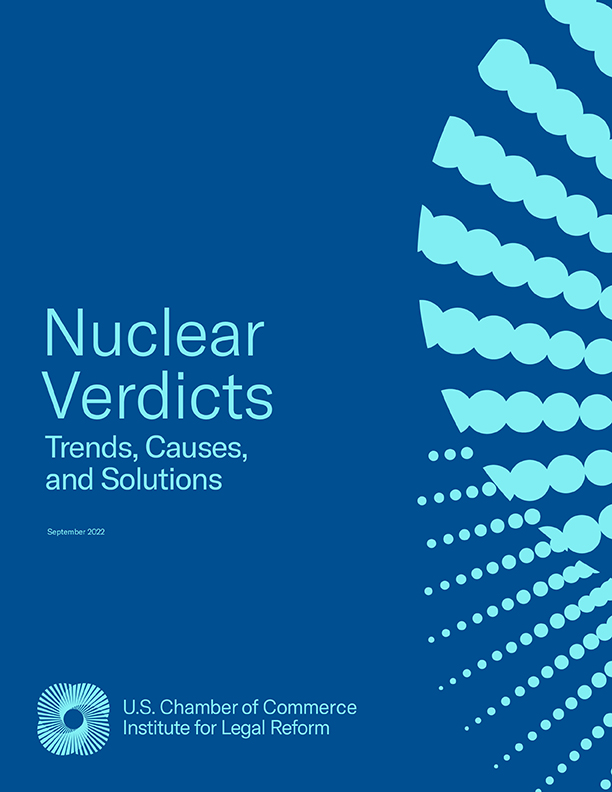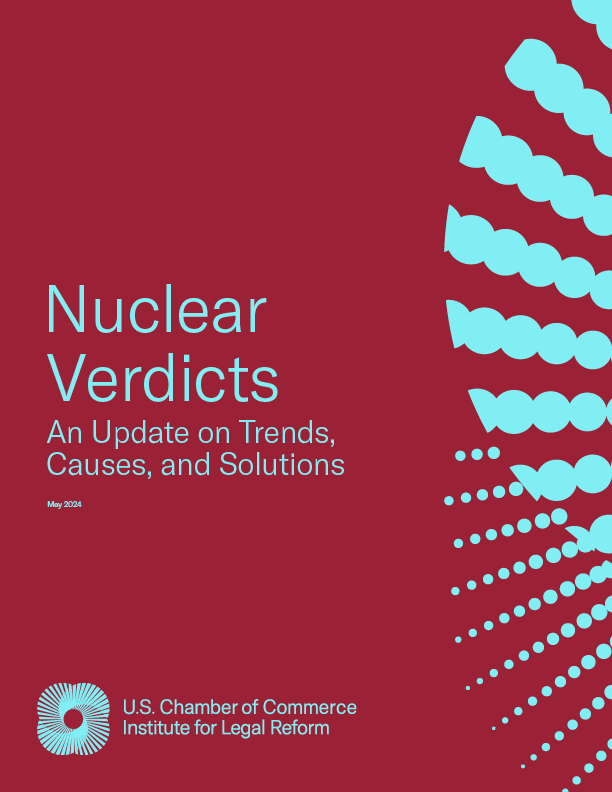In recent years, the growing trend of nuclear verdicts has captivated headlines. Nuclear verdicts refer to jury awards exceeding $10 million, often in personal injury or wrongful death lawsuits. There are three types of damages awards: noneconomic damages, economic damages, and punitive damages. Noneconomic damages compensate victims for non-financial losses, such as pain and suffering and emotional distress. Economic damages refer to actual financial damages, such as medical bills resulting from a defendant causing harm. Punitive damages are handed out to punish companies for the alleged harm or force them to change their behavior rather than compensatory damages, which are intended to make the plaintiff whole for things like medical expenses or lost wages.
The civil justice system was designed to address individualized disputes with fair and finite awards. Unfortunately, the system is now overrun with high payout cases, like nuclear verdicts, largely controlled and initiated by plaintiffs’ firms. Because of their massive size and unpredictability, nuclear verdicts can threaten the existence of a defendant business, raise costs for consumers, and prolong litigation by virtually guaranteeing an extensive cycle of appeals. The system should exist to serve the public good by providing justice for harm done, not as a massive payday for plaintiffs’ lawyers.
A new ILR research paper, Nuclear Verdicts: An Update on Trends, Causes, and Solutions, continues to show that nuclear verdicts continue to rise in frequency and size. The highly anticipated paper analyzed 1,288 reported nuclear verdicts in personal injury and wrongful death cases over a 10-year period between January 2013 and December 2022. It states that while the median nuclear verdict during the 10-year period is about $21 million, the average is substantially higher–$89 million. Compared to the previous report, the average nuclear verdict rose from $76 million to $89 million, largely due to an increase in the size of awards in product liability, auto accidents, and other negligence trials.
The causes of nuclear verdicts are multifaceted. Plaintiffs’ lawyers often employ tactics designed to manipulate juror behavior and inflate damages. One tactic is the “reptile theory,” which aims to instill a sense of danger in jurors’ minds, diverting their attention from the evidence. Another tactic is jury anchoring, where lawyers suggest a specific, exorbitant amount of damages or apply a method for calculating damages that leads to a nuclear verdict. These tactics, combined with persistent lawsuit advertising, mislead the public into believing multi-million-dollar verdicts are normal, contributing to the increasing frequency and amount of nuclear verdicts.
Nuclear verdicts have profound implications for businesses and consumers. For businesses, especially smaller ones, a nuclear verdict can threaten their viability, negatively impacting local economies. Even larger businesses are affected, leading to higher prices for goods and services passed on to the consumer. Nuclear verdicts can cause insurance costs to rise as insurers must cover the risk of big payouts. Small businesses may struggle to get insurance or may end up paying a lot more for it, which can hurt their bottom line.
Nuclear verdicts pose a significant challenge to the balance and fairness of the civil justice system. They not only affect the parties involved in the litigation, but they have broader economic and societal consequences. It is crucial for the legal system to address the factors contributing to nuclear verdicts and seek reforms that promote greater fairness.



